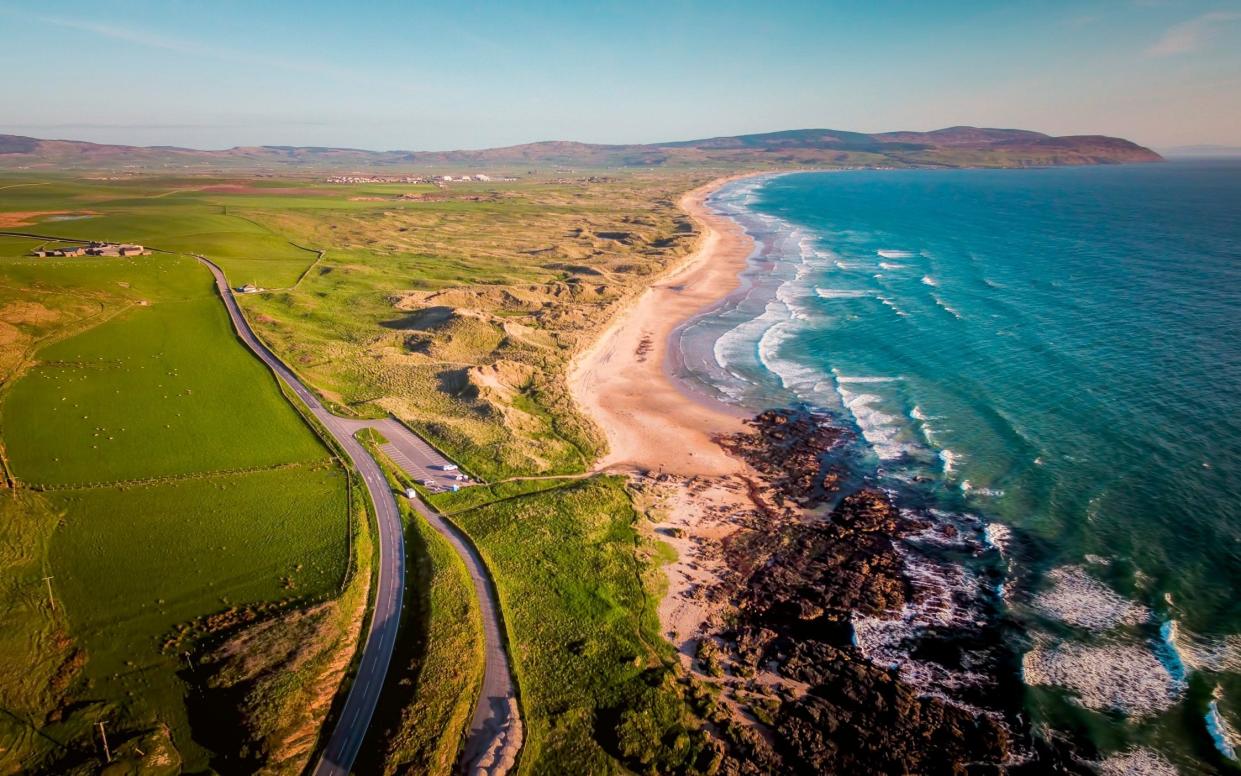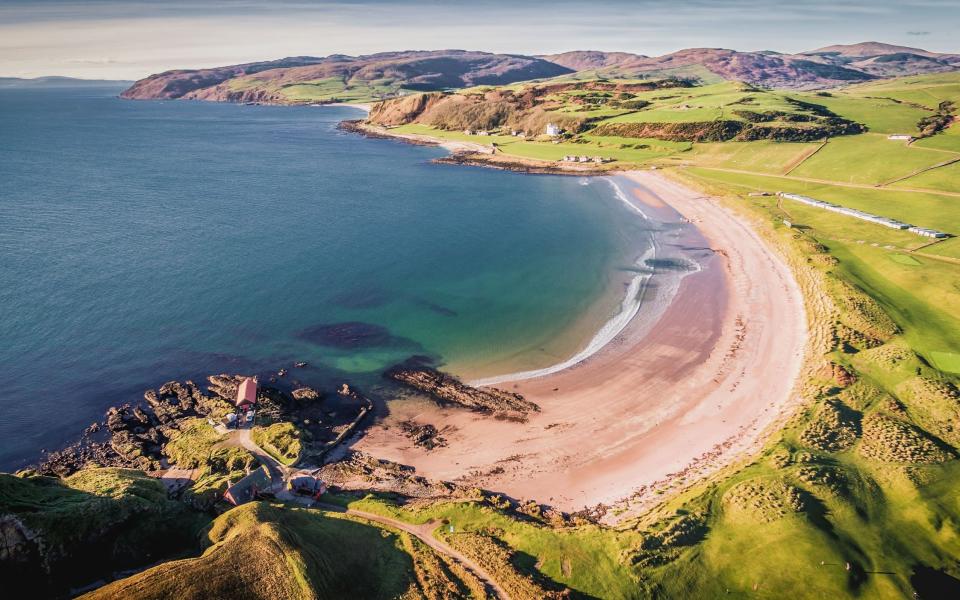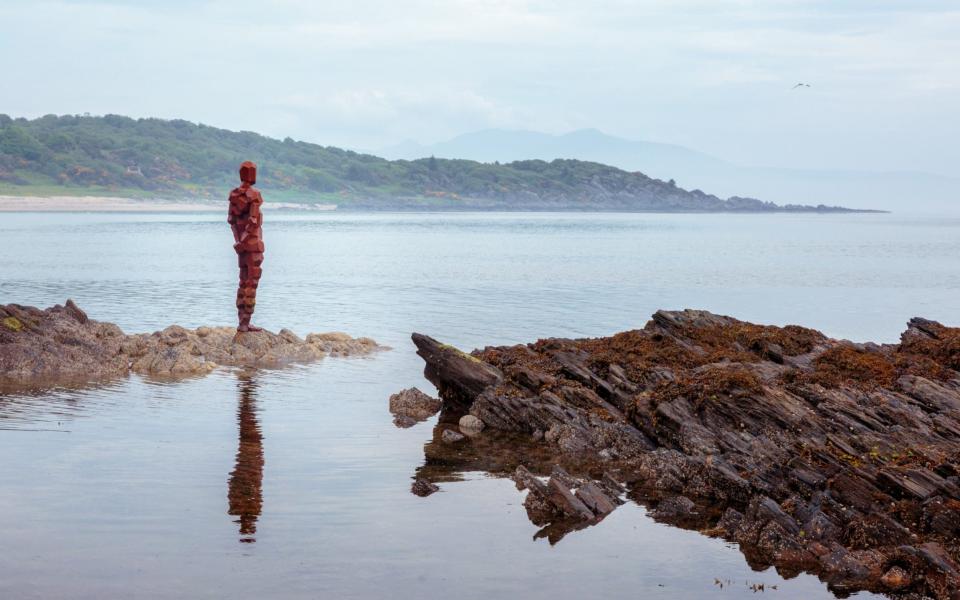The alternative Scottish road trip you need to try this summer

Here’s a pop quiz question for you: apart from the obvious, what do Paul McCartney, Mick Jagger and Jack Bruce of 1960s Brit supergroup Cream have in common? OK, I’ll tell you. Believe it or not, they all wanted a piece of Kintyre.
On this remote Scottish peninsula, you hear so many stories about the area’s rock-star farmers and wannabe lairds that it almost becomes a running joke. Sir Paul owns High Park Farm above Campbeltown, Jack once lorded over the privately-run Sanda Island, and Sir Mick failed in an attempt to buy the Isle of Gigha. You could say Kintyre has that kind of effect on people.
On the morning I drove down the narrow sliver of land from Tarbert to Campbeltown, there was still talk of “the Beatle” and it’s hard to shake the idea that we’re not living in the 1970s. There’s the lack of phone signal, for a start. The scaled-back single track roads. The traffic-jamming cattle. It feels almost like a forgotten secret; a time capsule of what is so spiritually uplifting about the Scottish west coast in the first place. Little did I know.
For full disclosure, I’ve travelled around Scotland from Stranraer to Shetland, but Kintyre has remained a blank spot on my mental topographic map, despite growing up close by. For many, it’s a similar story: Kintyre is but a stepping stone from Arran to the Inner Hebridean islands of Islay and Jura. Your satnav won’t bring you, the locals say. You really need to want to come.
Post-pandemic, that is something the area is redressing, hence the launch of the K66, a slow road trip that vies with the North Coast 500 in the sublime stakes. Launched earlier this month, the 66-mile trail moseys alongside an elemental landscape of cliffs and coves down the UK’s longest cul-de-sac, ending abruptly at the stumpy Mull of Kintyre lighthouse, only 12 miles across the narrow sea to Northern Ireland. There are gentle gradients and timid bends, but a surplus of reasons to linger.

If this corner of south-west Scotland looks ripe for enterprise, that’s because it has been overlooked for so long. Business is blooming, and on the road from Carradale, I met Niall Macalister Hall, distillery owner of Beinn an Tuirc, which occupies a former piggery next to Torrisdale Castle. His glorious Kintyre Gin is made using Iceland moss and sheep’s sorrel, both of which flourish on the surrounding estate, and this summer a new gin school and café is opening with views out to Arran’s teeth-bearing mountains.
“We’ve got plans for foraging weekends and glamping cabins, but we won’t ‘over gin’ the place,” Niall said. “We grow apples in the estate orchard, so maybe we’ll do a brandy next. A Calvados of Kintyre has a nice ring to it.”
Niall is almost royalty in these parts – he inherited the estate from his great-great-grandfather Peter Hall, who co-founded the British India Steam Navigation Company, which later morphed into P&O – and his favourite spot is Saddell Bay, where Macca and a pipe band shot the video for mega-hit Mull of Kintyre. Here, he took me on a beach walk along the shore, past Cul na Shee cottage – now rented every summer by the ex-Communard Reverend Richard Coles (what is it with musicians and Kintyre?).
The water was glassy-calm and clear, with a startling blue quality: we picked our way over seaweed matted rocks to where a rough-hewed sculpture faces Kilbrannan Sound like a standing stone. It is an Antony Gormley iron-cast statue and one that demands you take notice, looking to the horizon as if caught between heartbreak and hope. Hard to know what the seals make of it.

From Saddell Castle, the K66 is once again visible and it’s not hard to appreciate the view south on a road hemmed in by ravishing beaches and crashing waves. Devoid of traffic and so still in the early-evening air, it soon shifts up a gear, from isolated farm crofts to stone-walled Victorian villas, as the road enters Campbeltown. In Kintyre’s biggest town, history is glimpsed around every corner. I first sensed it the next morning at the foot of the glowering bronze of Sir William Mackinnon, the local boy turned founder of the Imperial British East Africa Company.
Then it ghosts me like a phantom throughout the day: inside the century-old Kintyre Smokehouse, where Archie MacMillan kilns mussels and sides of salmon for Fortnum & Mason; at the Lady Linda McCartney Memorial Garden, festooned with azaleas and petunias; and finally at Ardsheil Hotel’s whisky bar, where I found a 1938 Strathisla 12-year-old among the 500 bottles. As if you’d need a £300 dram to deepen the town’s pleasure.
Campbeltown eulogises its past glories and yet it has as an equally promising future. I met Iain McAlister at Glen Scotia, a creaky distillery in the heart of what was once the whisky capital of the world. The Victorian-era warehouse carries echoes of the town’s 1800s heyday when some 35 distilleries crowded the streets; today, only three remain. Iain, the distillery manager, shared the good news that the whisky producer’s 25-year-old recently won best in show at the San Francisco World Spirits Competition, beating 3,800 other whiskies – a sign that things are going more than well.
To the south, a spur of the K66 takes those in even less of a rush to Southend’s chalky beaches and the Mull of Kintyre lighthouse, but I headed for the Atlantic coast and Machrihanish. For most Scots, this is Timbuktu; a place everyone has heard of, but never dreamed about visiting.
For golfers, it is an imagined homecoming, the territory of a links course with a first tee described by the legendary swinger Jack Nicklaus as the world’s best. And he might be right. While Machrihanish is all about birdies and wind-whipped beaches, the Atlantic coast’s other highlights are tucked away to the north on the community-owned Gigha. This is an island you can almost have to yourself, and I paid a visit to an empty tombolo beach, a tropical rhododendron garden, and the Boathouse, which serves unrivalled halibut and flinty oysters in front of a cornflower-blue sea.
It was here, on a picnic bench by the sand, that I savoured the last few hours of my trip. There was no mist rolling in from the sea when I looked back to Kintyre. Only the dark distant mountains of Jura, the valleys of green, a sunset on fire and a sense of freedom as clear as a song.
How to do it
Double rooms at the Ardsheil Hotel cost from £99 B&B (01586 552133; ardshiel.co.uk). Double rooms at the Argyll Arms, from £85 B&B (01583 421212; argyllhotelkintyre.co.uk). The Boathouse on Gigha serves mains from £12 (boathouseongigha.com). A return ticket to Gigha with Calmac costs from £5.60 (calmac.co.uk).


